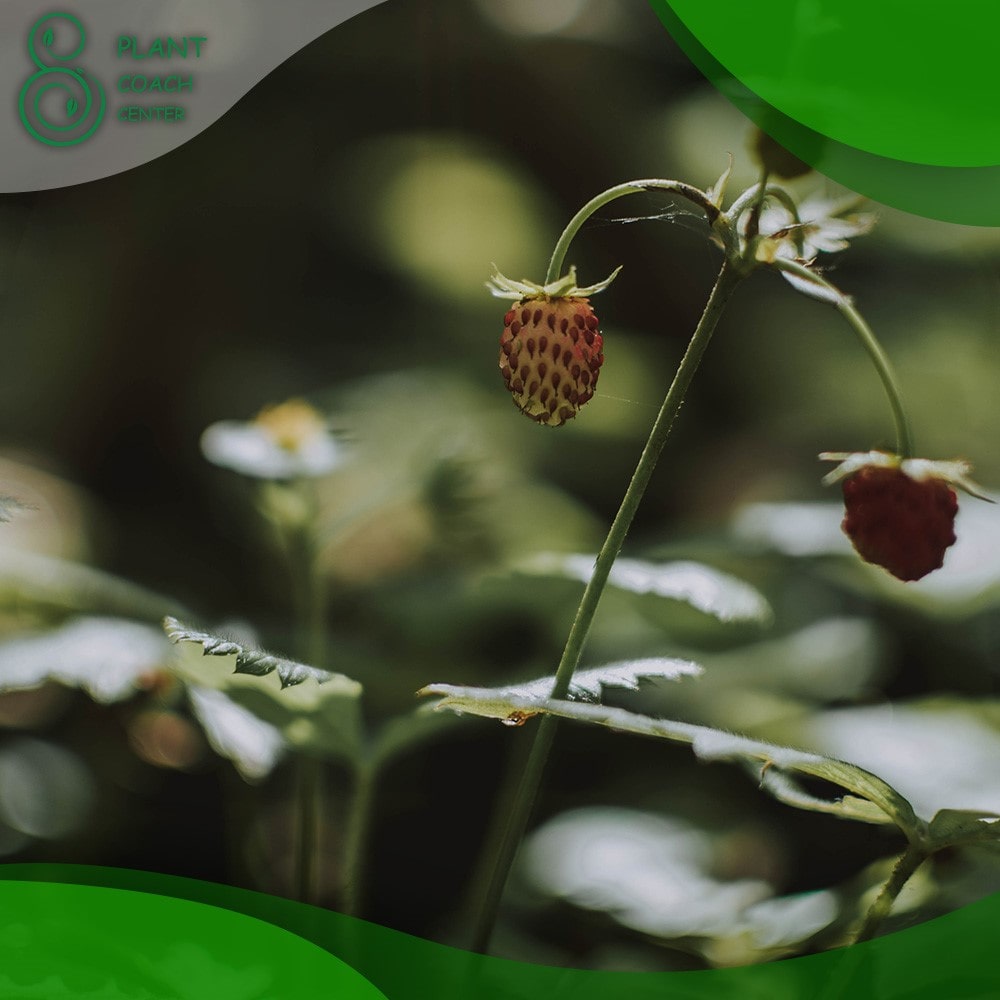When Do You Plant Strawberry Seeds?
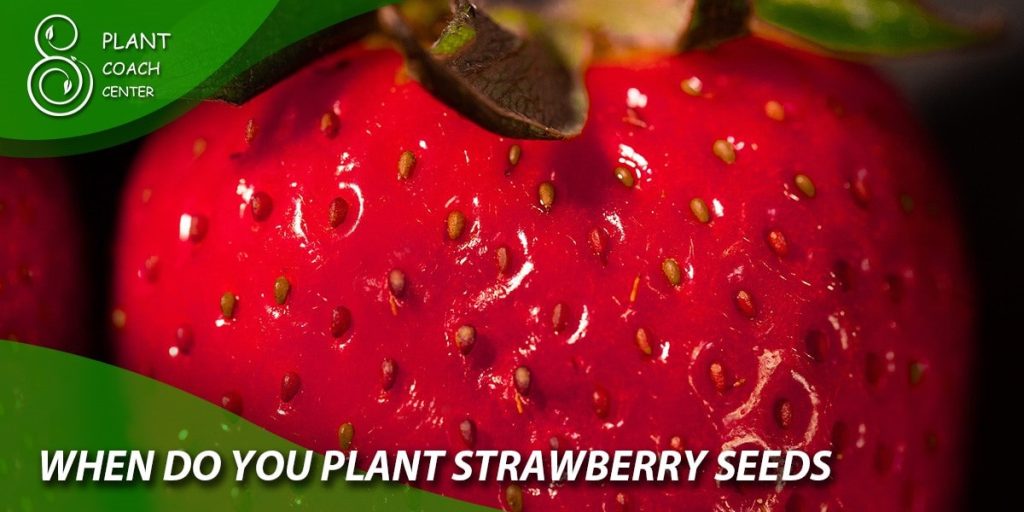
Embarking on the journey of cultivating your succulent, juicy strawberries from seeds is a rewarding endeavor that encapsulates the magic of gardening. The mere thought of plucking sun-kissed strawberries from your backyard makes any plant enthusiast’s heart skip a beat.
But as with any botanical pursuit, success hinges on knowing the proper steps and timing. The question “When do you plant strawberry seeds?” is the pivotal starting point. Whether you’re a seasoned green thumb or a novice gardener, understanding the nuances of strawberry seed planting can make all the difference between lackluster seedlings and a flourishing berry patch.
This comprehensive guide delves into the art and science of planting strawberry seeds, unraveling the mysteries of timing, germination, growth stages, and everything in between.
Get ready to unearth the secrets that will empower you to cultivate thriving strawberry plants, ensuring that the fruits of your labor are bountiful, delectable, and a testament to your horticultural prowess.
Timing it Right: Best Seasons for Strawberry Seeds
Selecting the optimal time to plant strawberry seeds is a crucial factor that can significantly impact the success of your strawberry patch. The timing varies depending on your location and local climate conditions, as strawberries thrive when given the right start. In regions with temperate climates, early spring is often the ideal season for planting strawberry seeds.
This allows the roots to take advantage of the warming temperatures and longer daylight hours, promoting robust growth. In colder climates, starting your strawberry seeds indoors during late winter is advisable. By doing so, you provide the sources with a head start, ensuring they are ready to be transplanted outdoors once the threat of frost has passed.
Conversely, planting strawberry seeds in the fall can be advantageous if you’re living in a region with milder winters and hot summers. This strategy takes advantage of the cooler temperatures, which provide an excellent environment for germination and early growth. The young seedlings will establish themselves over winter and be prepared to thrive when spring arrives. However, remember that the exact timing can vary based on your specific climate and local frost dates.
Consider the variety of strawberries you’re cultivating to further fine-tune your planting timing. Some varieties have been bred for early-season production, while others are better suited for later harvests. Researching the characteristics of different strawberry cultivars will help you align your planting schedule with their natural growth patterns.
By choosing the right season for planting and tailoring it to the unique conditions of your region, you set the stage for a successful strawberry seedling journey—one that promises a delightful abundance of these ruby-red delights when the harvest season arrives.
Chilling Requirement: Preparing Strawberry Seeds for Planting
Imagine a scenario where you plant strawberry seeds with anticipation, only to find minimal germination or weak seedlings. This disappointment can often be attributed to overlooking a critical step in the strawberry seed planting process: providing a chilling period, also known as stratification. Unlike some seeds that can germinate readily, strawberry seeds have a built-in mechanism that protects them from premature sprouting during warm weather.
Stratification mimics the natural conditions that strawberry seeds experience in their native habitats. In these environments, the seeds undergo a cold and damp period during the winter months before the warmth of spring triggers germination. By subjecting your strawberry seeds to artificial stratification, you’re tricking them into believing that winter has passed and it’s time to grow.
To stratify your strawberry seeds, place them in a moist medium, such as damp paper towels or sand, within a sealed container. Refrigerate the container for about 3 to 4 weeks. This cold, wet environment is vital for breaking the seed’s dormancy and kickstarting germination. Once the stratification period is complete, you can move the seeds to a warmer spot to encourage germination.
Keep in mind that not all strawberry seeds require stratification. Some modern varieties have been bred to have reduced or eliminated chilling requirements. Always check the specific guidelines for the strawberry variety you’re planting to determine whether stratification is necessary.
By understanding and providing for the chilling requirement of strawberry seeds, you set the groundwork for successful germination and healthy seedling growth. This patient and nurturing approach ensures that when the time is right, your strawberry seeds will burst forth with vitality, rewarding your efforts with vibrant plants and, eventually, delectable strawberries.
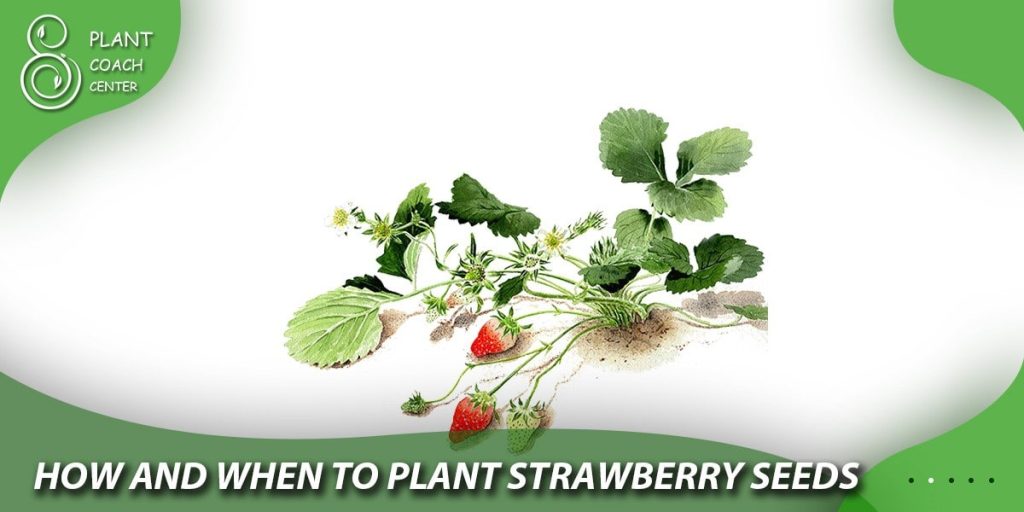
Indoors vs. Outdoors: Choosing the Right Environment for Germination
Whether to start your strawberry seeds indoors or directly sow them outdoors can significantly impact the success of your germination and early growth stages. Each approach has advantages and considerations, allowing you to tailor your choice to specific circumstances.
Starting Indoors
Kickstarting your strawberry seeds indoors provides a controlled environment to jumpstart germination. This method is especially beneficial in regions with shorter growing seasons or unpredictable weather. By germinating seeds indoors, you can shield them from unexpected late frosts or adverse conditions that could harm delicate seedlings.
Indoor germination also allows you to closely monitor and manage the seedlings’ growth. You can provide consistent warmth and light, ensuring optimal conditions for germination and early development. Transplanting matured seedlings outdoors is smoother, as they’re more robust and better prepared to withstand outdoor challenges.
Direct Sowing Outdoors
On the other hand, directly sowing strawberry seeds outdoors can be advantageous if you live in a climate with mild winters and longer growing seasons. This method eliminates the need for transplanting, which can be stressful for young seedlings. Direct sowing also avoids the risk of disturbing delicate roots during transplantation.
Additionally, some gardeners prefer direct sowing because it mimics nature more closely. Strawberry seeds naturally fall to the ground and germinate where they land. By replicating this process, you allow the roots to follow their innate growth pattern.
Indoors vs. Outdoors: Choosing the Right Environment for Germination
When germinating strawberry seeds, a critical decision is whether to start the process indoors or directly sow the seeds outdoors. Each approach offers distinct advantages and considerations, allowing you to tailor your choice to your growing conditions and preferences.
Starting Indoors
Opting for indoor germination provides a controlled and protected environment, precious in regions with unpredictable weather or short growing seasons. By germinating seeds indoors, you can jumpstart the process and ensure that the delicate roots are shielded from potential late frosts or adverse conditions that could hamper their growth.
Indoor germination also allows for precise monitoring and management of the seedlings’ conditions. You can regulate temperature, humidity, and light, providing optimal settings for germination and early growth.
As the seedlings mature indoors, they develop more robust root systems and sturdier stems, making the eventual transition to the outdoors smoother and less stressful for the plants.
Direct Sowing Outdoors
Directly sowing strawberry seeds outdoors can be advantageous in climates with mild winters and longer growing seasons. This method closely mimics nature’s process, as strawberry seeds naturally fall to the ground and germinate in their intended spot. By directly sowing, you avoid the potential shock of transplanting, which can sometimes disrupt delicate root systems.
Direct sowing is also more straightforward, saving time and effort by eliminating the need for indoor germination and subsequent transplanting. However, it’s essential to time your outdoor sowing correctly, considering the last frost date and ensuring the soil is adequately prepared for seed planting.
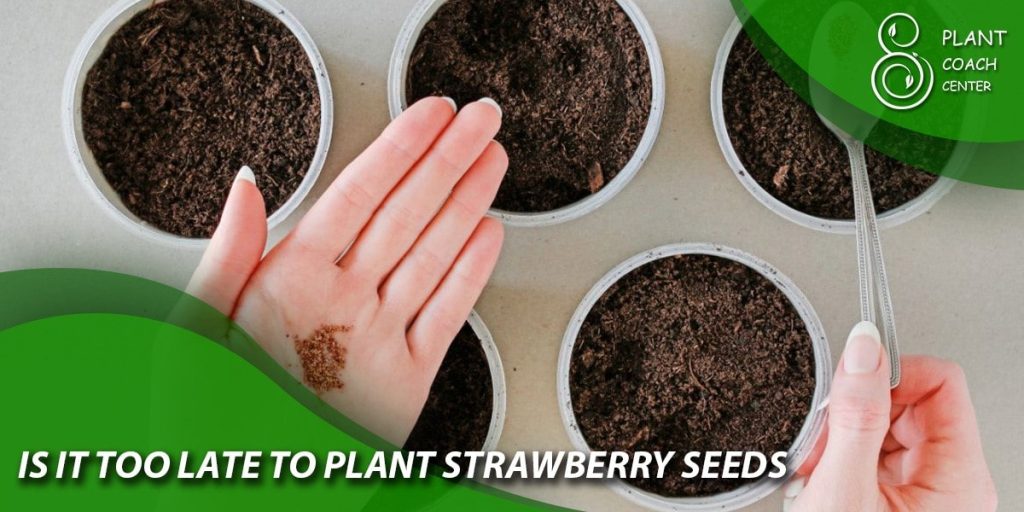
Soil and Sun: Creating the Ideal Bed for Strawberry Seeds
Creating the perfect environment for your future plants is paramount as you grow strawberries from seeds. The soil you choose and the amount of sunlight your strawberry seeds receive play vital roles in determining the health and productivity of your plants.
Choosing the Right Soil
Strawberries thrive in well-draining soil with a slightly acidic to neutral pH (typically around 5.5 to 7.0). Ensure the ground is loose and loamy, allowing proper root penetration and preventing waterlogging. You can enhance soil drainage by adding compost or other organic matter.
This improves soil structure and provides essential nutrients for healthy growth. Before planting, perform a soil test to gauge pH levels and nutrient content, and make necessary amendments based on the results.
Providing Adequate Sunlight
Sunlight is the lifeblood of plants, and strawberries are no exception. These sun-loving berries flourish when exposed to at least 6 to 8 hours of direct sunlight daily. Choose a planting location that receives ample sunlight in your garden, on a balcony, or even on a sunny windowsill if you’re starting seeds indoors. Insufficient sunlight can lead to weak, leggy seedlings that struggle to thrive.
Preparing the Planting Bed
Whether planting directly outdoors or transplanting seedlings, prepare the planting bed thoughtfully. Loosen the soil to a depth of around 6 inches (15 cm) and remove any weeds, rocks, or debris. If planting in rows, ensure proper spacing between plants for healthy air circulation. Use a high-quality potting mix for raised beds or containers that provides excellent drainage and aeration.
Mulching for Success
Applying a layer of organic mulch around your strawberry plants can be incredibly beneficial. Mulch helps regulate soil temperature, conserves moisture, and suppresses weed growth. Straw, pine straw, or wood chips are popular choices for strawberry mulch. Remember to keep the mulch away from the base of the plants to prevent rotting.
Patience and Progress: Stages of Germination and Growth
Embarking on the journey of growing strawberries from seeds requires diligence and a healthy dose of patience. Understanding the stages of germination and growth that strawberry seeds undergo can help you appreciate the process and make informed decisions to nurture your plants to their fullest potential.
Stage 1: Germination
Germination is the magical moment when a dormant seed awakens and begins to sprout. After the stratification period, strawberry seeds respond to warmth and moisture by sending out a tiny root, followed by a shoot that will develop into the plant’s stem and leaves. Depending on temperature and seed variety, this stage can take a few days to a couple of weeks.
Stage 2: Cotyledon Development
As the shoot emerges, you’ll notice the appearance of the cotyledon leaves. These are the first leaves to show up and serve as the seedling’s initial source of nourishment. Providing adequate light is essential to ensure that the seedling doesn’t become too leggy as it stretches toward the light source.
Stage 3: True Leaf Formation
After the cotyledon leaves, the true leaves begin to emerge. These leaves resemble the mature leaves of the strawberry plant. The presence of true leaves indicates that the seedling establishes a robust root system and is ready for more consistent light exposure. At this stage, consider thinning or transplanting the seedlings to provide adequate space for growth.
Stage 4: Runner Production
Strawberries are known for their runners—long stems that produce new plantlets. As the seedlings continue to grow, you might observe the development of runners, especially in the warmer months. While exciting, it’s a good idea to pinch off runners initially to encourage the plant to focus on root and leaf growth. Once the plant strengthens, you can allow some runners to develop new plants.
Stage 5: Flowering and Fruiting
With proper care, your strawberry seedlings will eventually mature into plants capable of producing flowers and fruit. Flowers appear on the plants, and once pollinated, they transform into small green fruits that will gradually ripen to the iconic red berries. This stage marks the culmination of your patient efforts and the anticipation of enjoying the literal fruits of your labor.
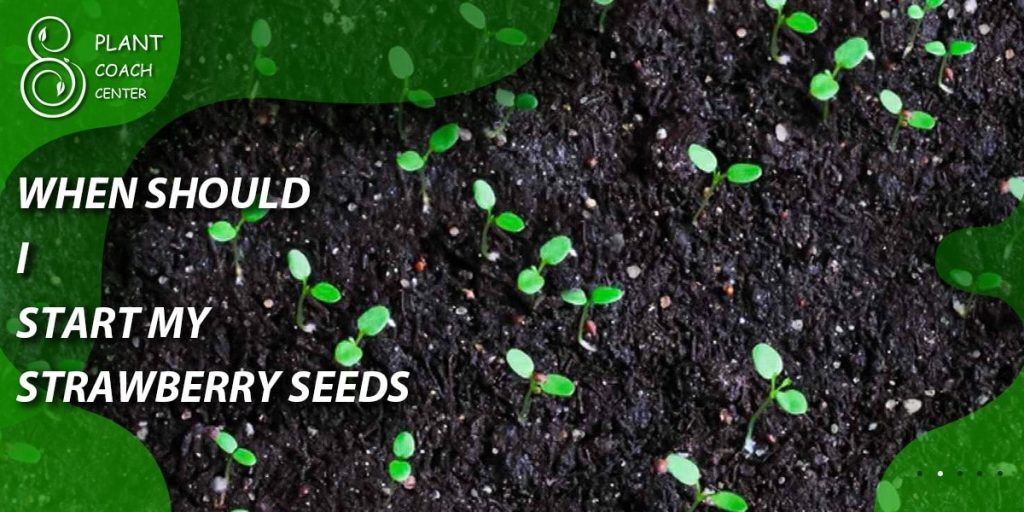
From Seedlings to Strawberries: Timeframe for Harvest
The journey from planting strawberry seeds to the eagerly awaited moment of harvest is a rewarding experience that requires patience and anticipation. Understanding the growth and development timeline will help you manage your expectations and celebrate each milestone on the way to enjoying your own homegrown strawberries.
Germination and Early Growth (Week 1 – 3)
The initial weeks after planting the seeds are marked by germination and the emergence of cotyledon leaves. Seedlings will establish their root systems and develop their first true leaves. During this phase, focus on providing consistent moisture and adequate light to promote healthy growth.
Establishing Young Plants (Week 4 – 6)
Your seedlings will strengthen and develop into young plants as the true leaves grow. This period is crucial for root development and overall plant vigor. Regularly monitor soil moisture and ensure proper ventilation to prevent diseases. If you started indoors, consider gradually transitioning seedlings to outdoor conditions to acclimate them to the environment.
Vegetative Growth and Runner Formation (Week 7 – 10)
Around the 7th to 10th week, you might notice the formation of runners, which are long stems that produce new plantlets. While runners are exciting, it’s wise to remove some initially to direct the plant’s energy toward root and leaf development. Continue providing adequate sunlight, regular watering, and possibly some light fertilization to encourage robust growth.
Blossom to Berry (Week 11 – 14)
As your strawberry plants mature, they will begin to produce flowers. These flowers will eventually give way to small, green berries. This phase requires consistent moisture and attention to prevent stress that could lead to misshapen fruit. While it’s tempting, remove the first-year flowers to redirect energy into plant growth. In subsequent years, you can allow the blooms to develop.
Ripening and Harvest (Week 15 and beyond)
The most exciting phase has arrived—the ripening of your strawberries! Depending on the variety and local conditions, your berries will turn from green to the luscious red hue you’ve been waiting for. Harvest the strawberries when they are entirely red, plump, and have reached their peak sweetness. Gently pick the berries, leaving the stem intact.
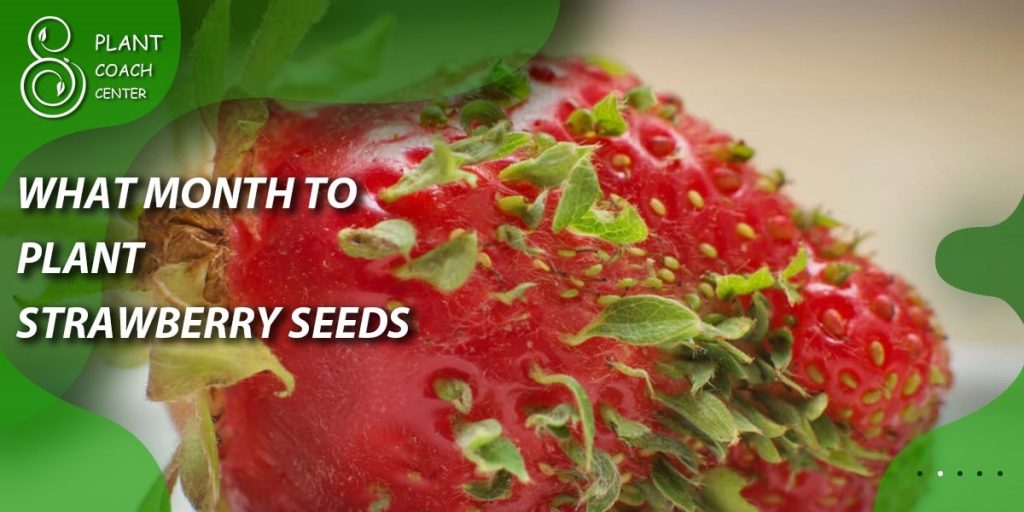
Conclusion
Embarking on the journey of growing strawberries from seeds is a delightful adventure that merges horticulture science with the art of patience. From understanding the significance of stratification to choosing the right environment for germination and nurturing each growth stage to savoring the sweetness of harvested berries, the process is a testament to the intricate dance between nature and cultivation.
Remember, the information shared here serves as a guide, but your unique gardening journey will be shaped by your local climate, personal touch, and the lessons you learn. As you watch your strawberry seeds transform into thriving plants, remember that the journey is as rewarding as the destination.
So, whether you’re starting a strawberry patch on your garden plot, balcony, or windowsill, the resources and knowledge available at PlantCouchCenter.com can provide ongoing support and inspiration for your gardening endeavors. May your strawberries flourish, your hands savor the earth’s embrace, and your heart revels in the magic of growing life from the tiniest seeds.
Can I plant strawberry seeds at any time of the year?
Strawberry seeds are best planted during specific seasons that align with your local climate. Spring and fall are usually optimal times for successful growth.
Do strawberry seeds require special preparation before planting?
Many strawberry seeds need a period of cold stratification to simulate winter conditions, enhancing germination rates and plant vigor.
How long does it take for strawberry seeds to grow into fruit-bearing plants?
From planting to harvesting, strawberry plants generally take around 4-6 months to produce ripe, succulent strawberries.


